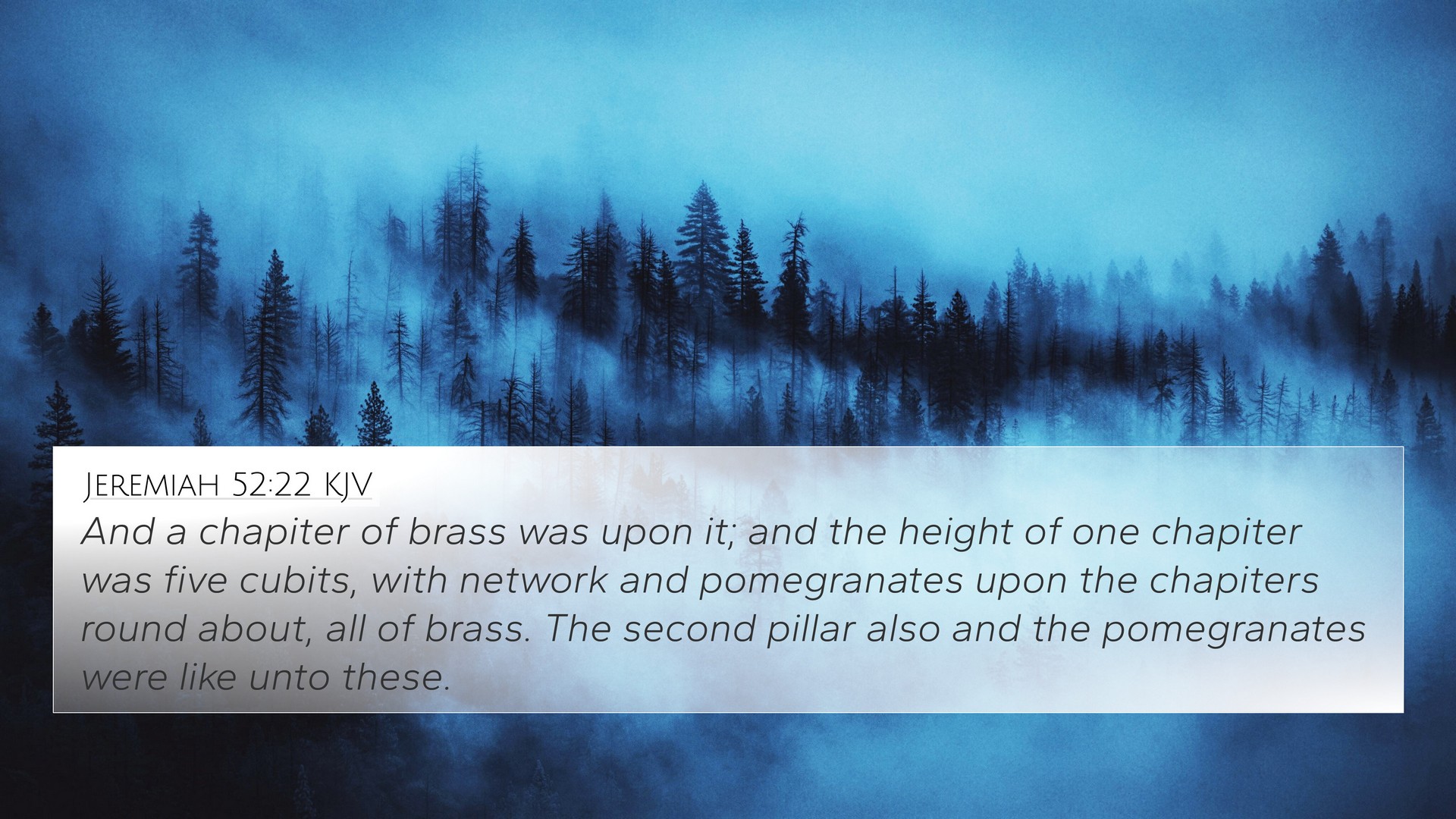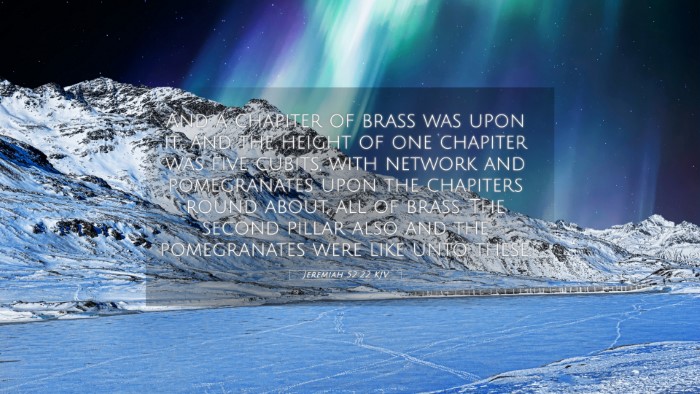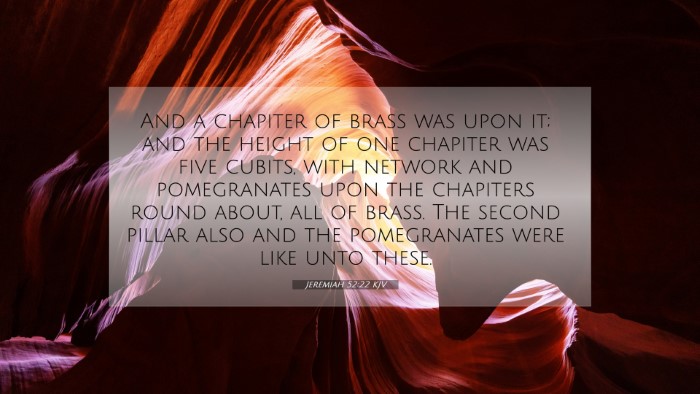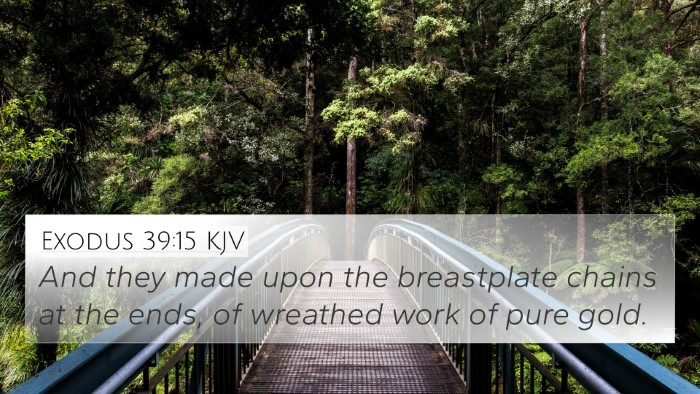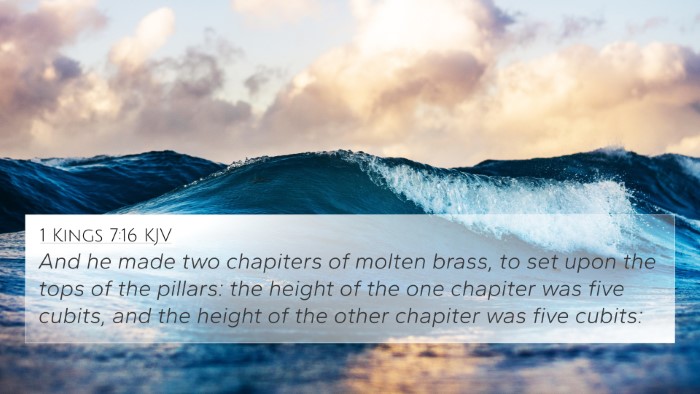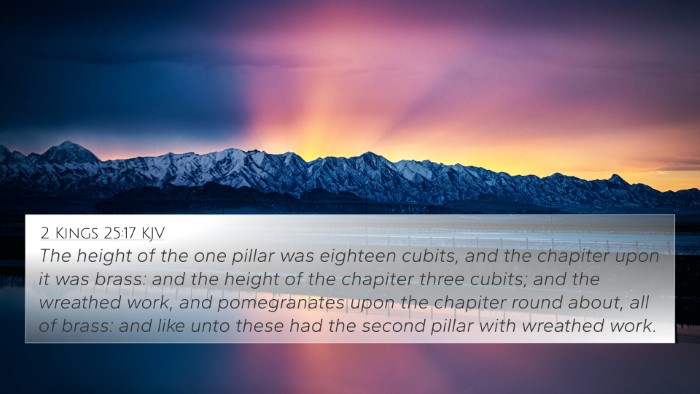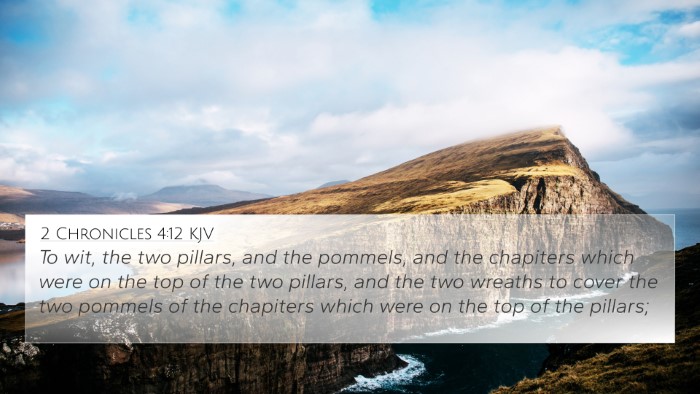Understanding Jeremiah 52:22
Jeremiah 52:22 states, "And a brass pillar that was in the house of the Lord, and the fame to stand upon it: and the cxviidoor to the house of the Lord, and the manner of the temple held up in the jewels belonging to it."
Summary of Insights
This verse captures a significant moment within the broader context of the prophet Jeremiah's narrative about the destruction of Jerusalem. The brass pillar mentioned here is part of Solomon's temple, which represents God's presence among His people. The pillars, named Jachin and Boaz, stand as symbols of strength and stability.
Thematic Insights
- God's Presence: The brass pillar signifies the manifested glory of God which was connected to the temple.
- Judgment and Destruction: The mention of the pillar in a verse depicting ruin highlights the consequences of Israel's unfaithfulness.
- Historical Context: Understanding the historical context within which Jeremiah prophesied enhances comprehension of the verse's gravity.
- Spiritual Symbolism: Pillars often represent strength, and here it signifies God’s eternal nature contrasted with the temporal downfall of the temple.
Cross-References
The study of this verse reveals a profound interplay between various scriptures. Below are cross-references that elucidate its meaning:
- 2 Kings 25:17 - Details the construction of the pillars.
- 1 Kings 7:21 - Discusses the pillars erected at the temple.
- Jeremiah 1:14 - Prophecies of impending judgment and its manifestations.
- Isaiah 22:23 - Symbolic representation of strength and stability.
- Hebrews 8:5 - Refers to the heavenly reality of the earthly temple.
- Revelation 21:18 - The imagery of the new Jerusalem with its foundations.
- Proverbs 10:25 - Portrays the transient nature of worldly institutions compared to God.
Comparative Analysis with Other Verses
Connections between this verse and other Biblical passages reveal deep theological insights:
- Connections to Exodus 25:10-22: Relates to the detailed description of the temple’s furnishings.
- Linking with Ezekiel 40-43: Describes a vision of a restored temple, emphasizing hope after destruction.
- Bible verses such as Psalm 127:1: Reinforcing the notion that unless the Lord builds the house, it is in vain.
Bible Study Resources
For those seeking to delve deeper into Bible verse cross-referencing, here are some tools and methods:
- Bible Concordance: Use a concordance to find keywords related to the verse.
- Cross-Reference Bible Study: Explore connections between verses through thematic studies.
- Bible Cross-Reference Guide: Comprehensive guides can enhance understanding through linked verses.
- Bible Reference Resources: Utilize tools that compile connections to streamline your study.
Interpreting Themes through Cross-References
Understanding biblical themes, particularly as expressed in Jeremiah 52:22, is essential for comprehensive exegesis:
- Finding Cross-References for thematic studies: Learn how to identify overarching themes relevant to this verse.
- Identifying connections between Old and New Testament: Discern how this passage foreshadows the establishment of God’s kingdom through Christ.
- Comparative study of Pauline Epistles: Analyzing interconnections between Old Testament prophecies and New Testament fulfillment.
- Cross-referencing Psalms with New Testament teachings: How this verse informs our understanding of worship and reverence in the presence of God.
Conclusion: The Significance of Jeremiah 52:22
In conclusion, Jeremiah 52:22 serves as a poignant reminder of the profound relationship between God’s glory and human disobedience. Through detailed Bible verse analysis and systematic cross-referencing, the believer gains insight into the nature of God and the consequences of turning away from Him.
